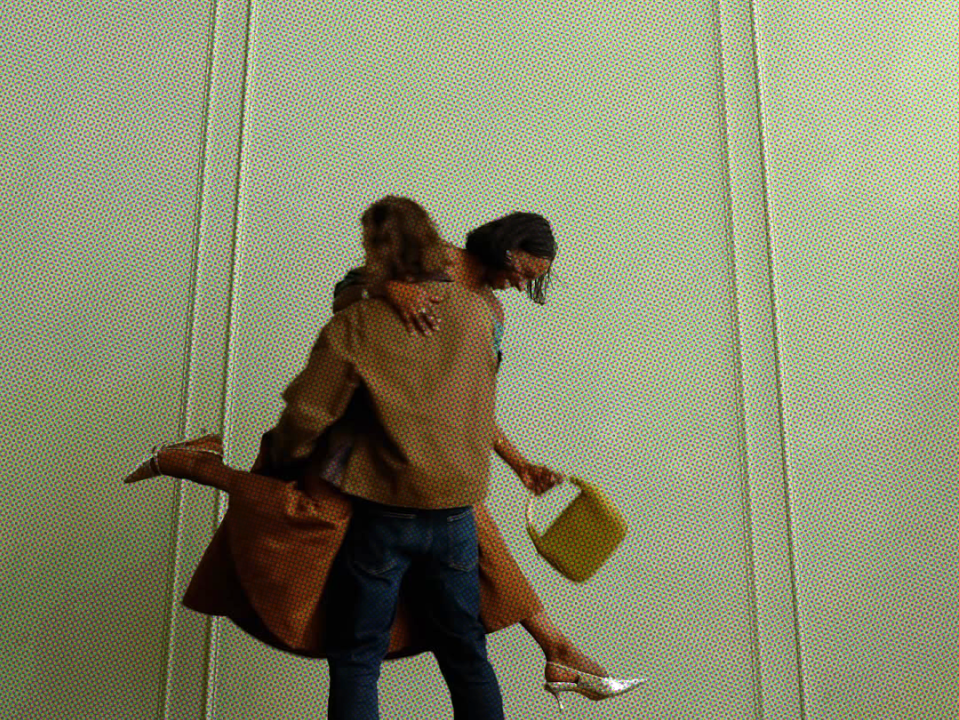
Once upon a time (a decade ago, if I may date myself), logging in to Instagram felt like entering a perfectly curated digital art gallery. There were moodboards, candid-but-not-too-candid portraits, and the occasional over-filtered sunset. Sure, at times it felt “overly perfect,” but it was a vibe! Now, every scroll feels like wading through a mall where everything is for sale and everyone is shouting. The rise of lo-fi video formats such as OOTDs (Outfits of the Day) and GRWMs (Get Ready With Me) has turned what once looked like a playground of creativity into a strip mall of DIY commercials masquerading under the banner of relatability. Amidst the current landscape, I often find myself asking, “Is there a place for beautiful content anymore?”

Bringing an editorial edge and cinematic storytelling to everything from basic OOTDs to slice-of-life storytelling.
These lo-fi formats weren’t always stale. At first, they felt like a welcome change. At the start of the COVID-19 pandemic, amidst the rising popularity of TikTok in the US, popular short-form video formats like the aforementioned GRWM and OOTD were easily produced by anyone with access to a smartphone and decent lighting (and even the lighting seemed optional). This content wasn’t just practical, it was comforting. Gone were the immaculate flat lays and Canon 5D Mark IV DSLR shots of yore; in their place were front-facing camera confessions, chaotic makeup routines, and blurry bedroom outfit checks. It felt casual, spontaneous, and even radical. In a world largely devoid of opportunities for IRL interaction, we craved a new level of intimacy with our role models online. Creators like Alix Earle and Victoria Paris became the new “it girls” by picking up their phones and showing us everything: the messy rooms, the pimple patches, and the outfits they didn’t wear. Social media felt less “Vogue editorial” and more “FaceTime with your cool friend.” And we loved it…until that, too, started to feel performative.
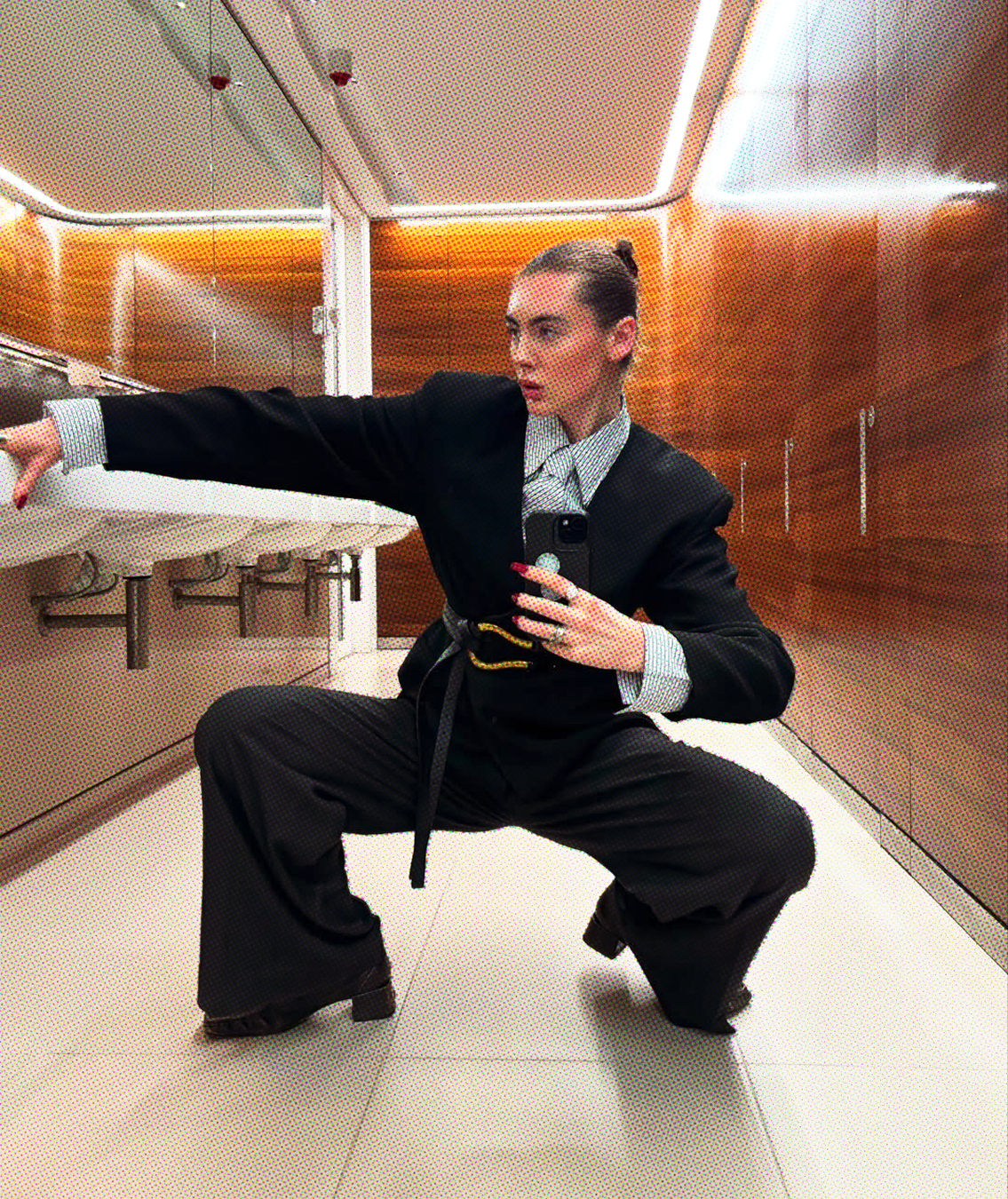
This creative Brit is making the mirror selfie look high-gloss editorial magazine worthy. The mirror selfie might be lo-fi, but her unique poses and elevated aesthetic make this format feel ready for a glossy magazine spread.
For Micaéla Verrelien, who built her following in the late 2010s with carefully produced editorial content, adapting to the changing tides has been strategic. “Sometimes people just want to know what you’re wearing,” she says, “so I started shooting about 20% of my content as more bite-sized GRWM videos.” Brand partners were quick to fall in line with the new output. She recalls pitching a carefully thought-out conceptual campaign to a brand partner, only to receive a reply that said “this is a great idea but, honestly, we just want a GRWM.”
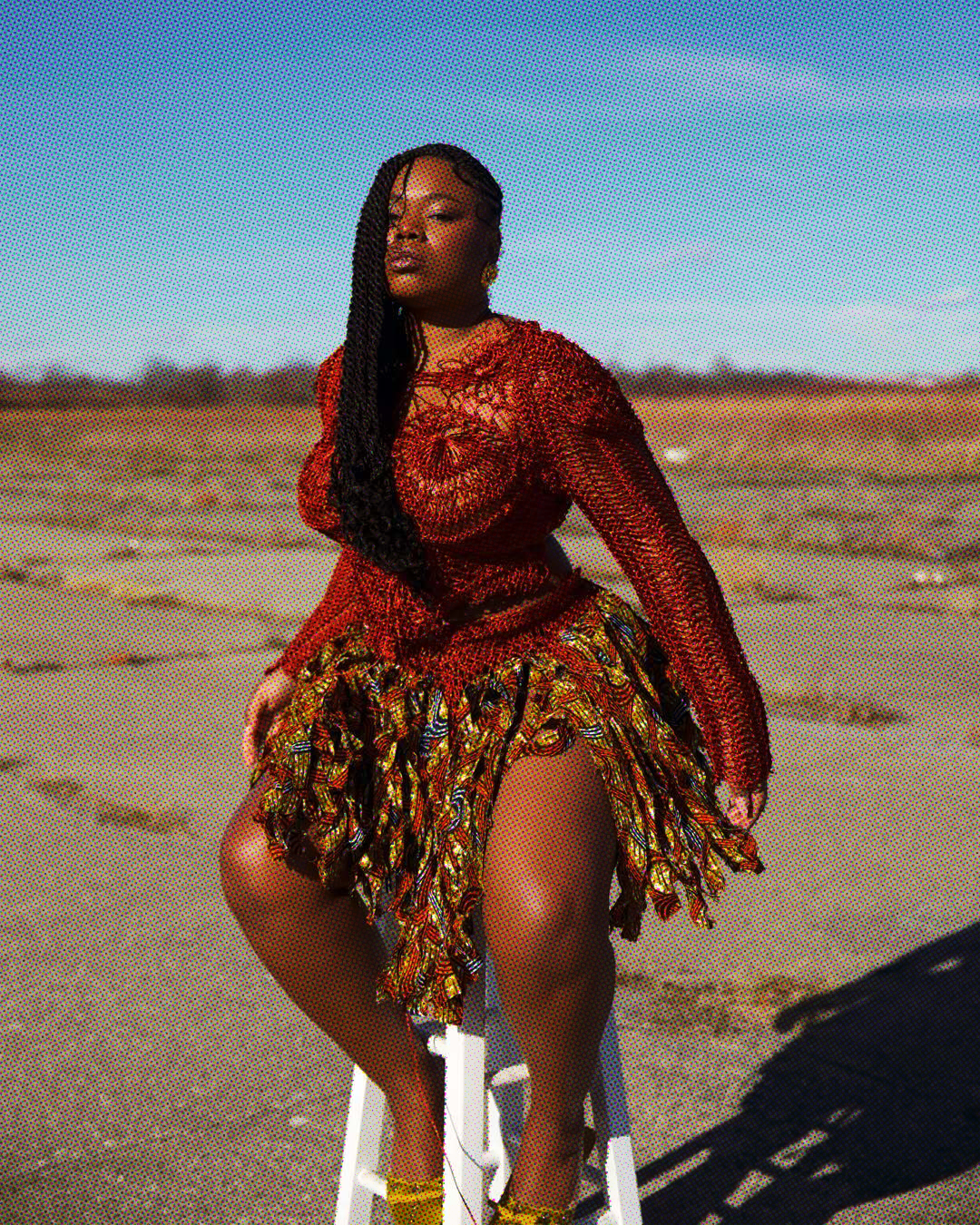
Micaéla balances editorial-inspired content with videos that bring a more creative and elevated spin to classic trending formats. She is also the co-founder of Sweet Fire Cafe & Studio, a cafe and event space aimed at supporting fellow creatives in Brooklyn.
I don’t actually think lo-fi content is bad, in fact, I think it’s rather genius. If the old influencer economy was aspirational, the new one is more tangible and transactional. (And can drive impressive results for brands.) GRWMs, OOTDs, and shopping hauls might feel casual and personal, but they’re also perfect sales vehicles given the inherent incorporation of products. With platforms like LTK (née rewardStyle or LIKEtoKNOW.it), the ever-elusive influencer ROI (Return on Investment) is easier than ever to track and extract. For brands, it’s been a goldmine. For creators, a tradeoff. Micaéla puts it plainly, “I know if I did only GRWM videos and only focused on affiliate lanes, I would have grown to 200,000 or 300,000 followers. But I’m on a particular mission, which is a very different mission.” She’s not alone. Amidst chatty vlogs and Amazon hauls, there still exists a corner of the internet where you won’t find such content.
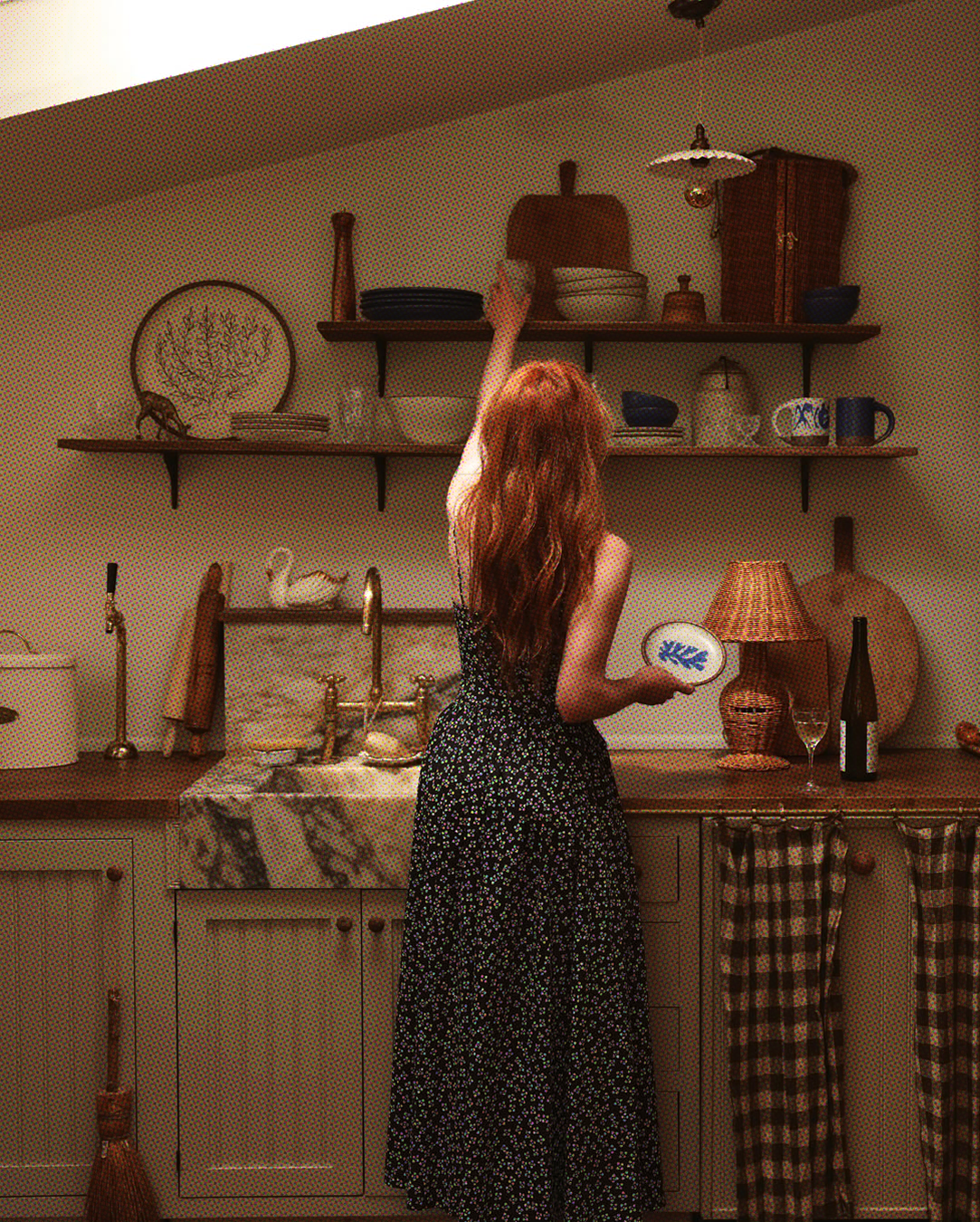
Courtney is a longtime content creator whose cinematic eye for storytelling is inspired by her background as an actress. Her posts - both photos and videos - feel like tiny vignettes into a dreamscape of her own creation.
I’ve followed Courtney Halverson for over a decade, and the style of content she’s produced has remained relatively unchanged in that time. On Instagram as @prettylittlefawn, she shares photos and videos that feel like scenes from an old film. Her feed is sepia-toned, black and white, distinctly cinematic, and almost stuck in time. I’ve often come to her page for inspiration and joy, comforted by the fact that she has always stayed true to her roots. “I attempted the whole lo-fi thing four or five years ago when it was really taking off,” she laughs, “but I wasn’t good at it and it didn’t perform for me.” Lately, that consistency seems to be paying off. After years of hovering at 200k followers, she’s now nearing 650k. The pendulum, it seems, is swinging back.
Micaéla has seen a similar trend. “Last year I grew around 20,000 followers from a series I did showing outfits in beautiful, glamorous places.” Both creators find that their current brand partners understand the value in creative storytelling. “I do a lot of travel and fragrance campaigns,” says Courtney, “for brands where you can’t easily just show and tell a product, you have to convey a story.” However, she also works with many of the fashion and beauty brands known to be spending across the aisle on lo-fi content. French fashion brand Sézane has been one of her longest-term partners, thanks in no small part to her performance in their affiliate program. Lo-fi content isn’t the only thing capable of driving sales.
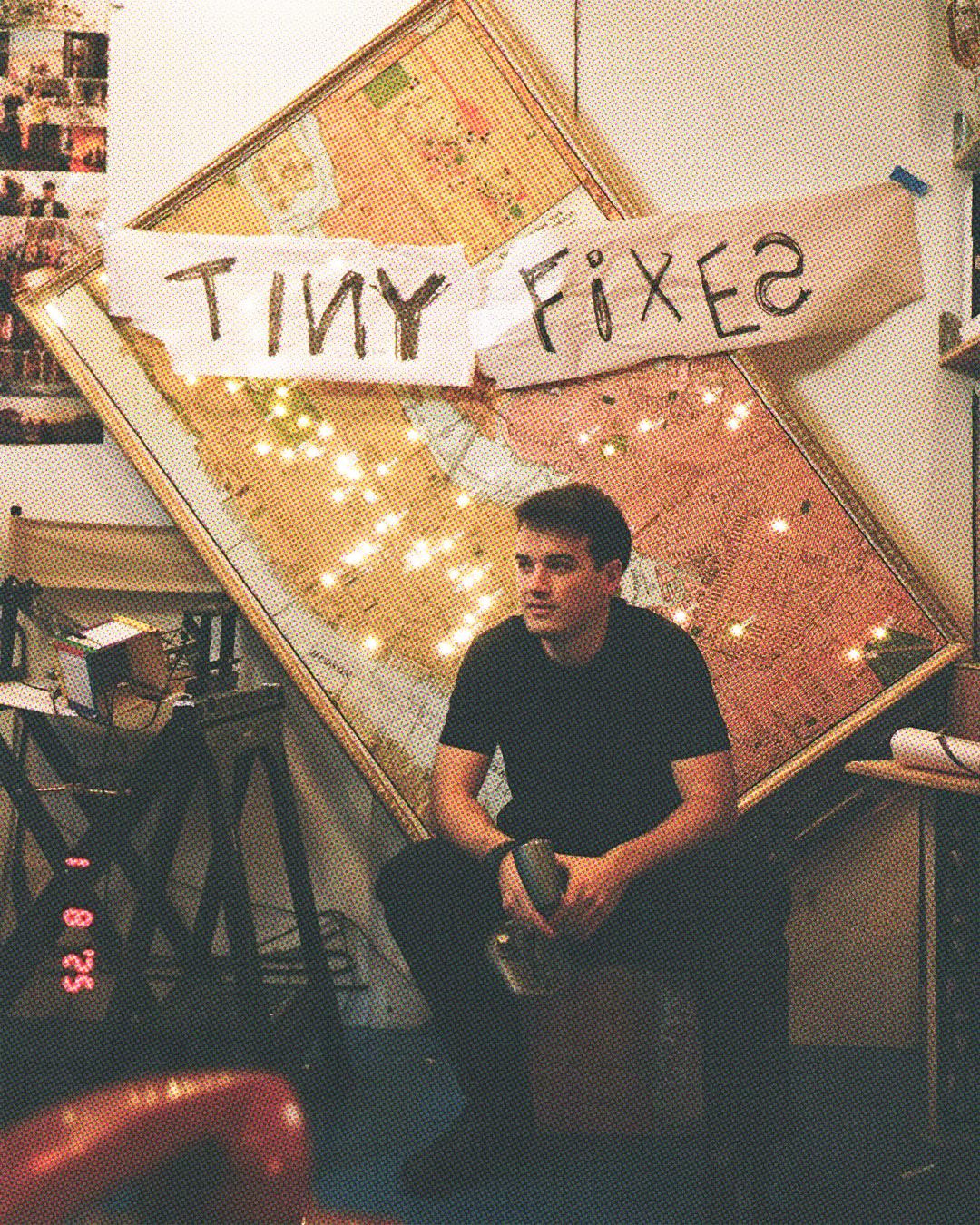
A tiny feature film in every post, Jordan tells a story in each video, often introducing us to “his friends”: a side cast of wacky and built out characters.
In general, there seems to be a desire to get more out of the social media we consume. The prevailing nostalgia for the 2010s, the resurgence of “digi cams” and film, and the rising popularity of blogging platforms like Substack all suggest that perhaps we’re longing for something more significant and artistic. Something with the density to hold off our ever-encroaching boredom. In fact, we’re more than bored, we’re straight up burnt out. It’s impossible to escape soundbites in the news or conversations at the dinner table about people significantly limiting their time on social media, or giving it up for periods of time to “detox.” In a world where every piece of content feels like a transparent ploy to sell something, making beautiful content becomes an act of resistance. Brands focused solely on conversion-driving lo-fi content risk getting lost in the endless scroll if they don’t invest in something of greater artistic substance with discernible tone, narrative stakes, production value, and emotional weight.

Brianna made the everyday vlog feel like a sitcom with her “Jones Journals” series, and is most recently “tired of giving y’all regular fit checks”, instead delivering her OOTDs via 360 editing.
There’s also an argument to be made here for art for art’s sake. Perhaps not every piece of content needs to sell, explain, or convert directly. Beauty, when done well, has always had intrinsic value. Perhaps more importantly, brands have long played a role in supporting that value. Luxury fashion houses endow entire museums. Traditional advertisements are directed by A-listers (Sofia Coppola for Miss Dior, Baz Luhrmann for Chanel No. 5, and Wes Anderson for Prada, to name a few). Even the most fervently commercial entities have historically supported storytelling and spectacle, not just because doing so sells, but because it creates cultural value. And smart brands want to be irrevocably woven into culture, not merely responsive to it. Social media is no different. The budgets and audiences may be smaller, but the desire to transcend is just as present.
"DO THE TRENDS, BUT DON'T
LET THE TRENDS DO YOU"
MICAÉLA VERRELIEN
For emerging creators, the current landscape is as daunting as it is freeing. Lo-fi content competes for attention with more cinematic storytelling. There’s no clear formula to success. However, this just means that there’s no better time to embrace creativity and be yourself. As Micaéla puts it: “Do the trends, but don’t let the trends do you.”
Lately, there’s a quiet renaissance underway. Creators are slipping beauty and ambition back into the old formats. About two years ago, Atiya Walcott, who posts under @atiyawalcottfits on Instagram and @atiyacwalcott on TikTok, started posting videos that began with her now-iconic tagline: “My name is Atiya Walcott. I’m incredibly fashionable, and let’s get dressed together.” Filmed inside a condo so stylish it feels like a co-star (vaulted ceilings, sage green walls, the works), Atiya’s outfit videos toe the line between editorial inspiration and the bite-sized content formats we’ve come to know and love. Equal parts professional and playful, her videos feel fresh and uniquely her own. The comments speak for themselves: “this is art,” “you are a creative genius,” “this feels like TikTok plus.” When the format is familiar and safe, there can be more room to take creative risks. The rules are known, but the real magic happens in the deviation. These little moments of surprise feel like a breath of fresh air in our algorithms, and brands are taking note.
When I asked Micaéla if she has any upcoming partnerships she’s excited about, her answer surprised me. It’s a partnership with a popular drugstore beauty brand. “I did my research and looked through all their paid content, and all I saw was get ready or get unready with me videos,” she says. Their brief, however, provided a novel challenge: “we want you to think beyond GRWM” Thankfully, Micaéla was more than ready for that challenge. For those of us craving beauty on our feeds, we’re ready too.





.webp)
.webp)
.webp)
.webp)
.webp)


